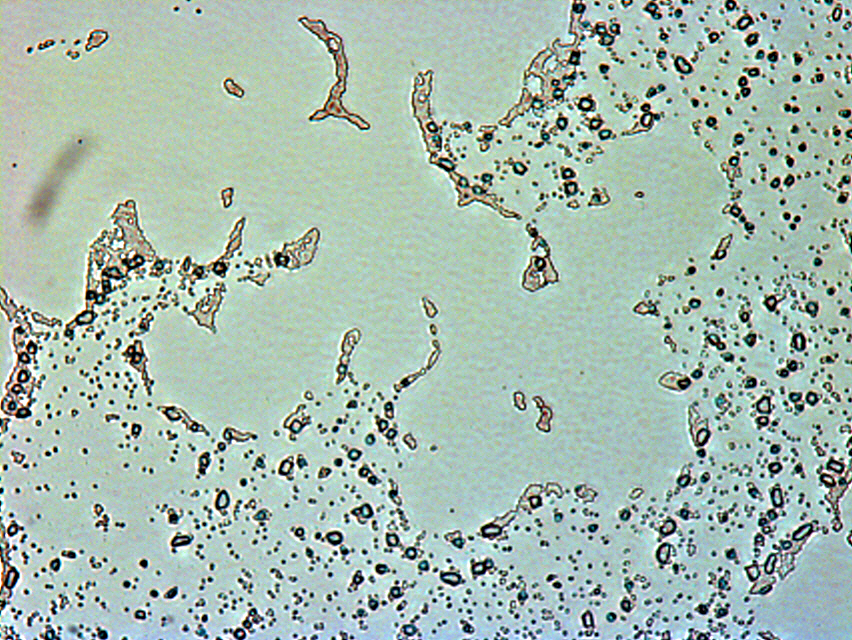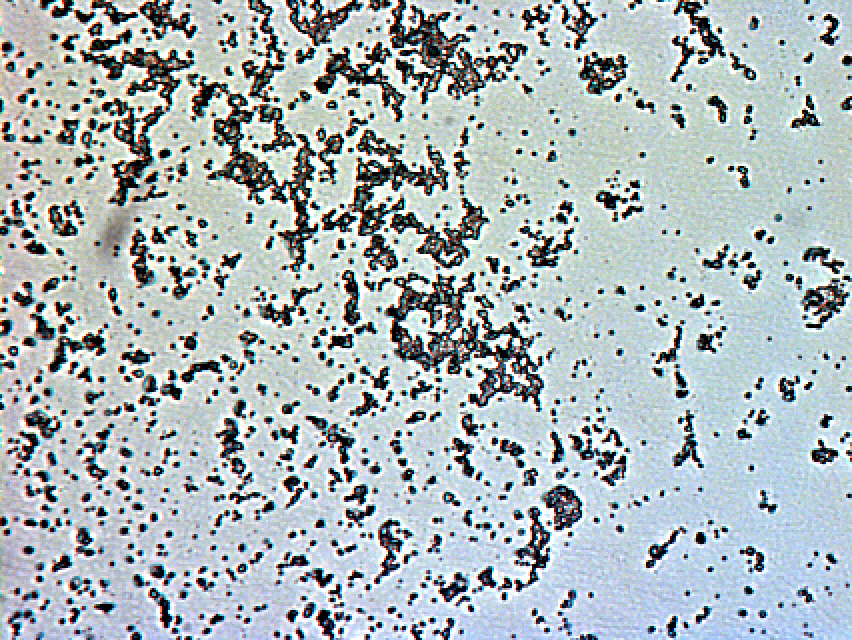Team:British Columbia/Project Biofilm
From 2010.igem.org
| Line 10: | Line 10: | ||
<br><h3><b>Approach</b></h3></br> | <br><h3><b>Approach</b></h3></br> | ||
| + | <p>The Biofilm subteam obtained the majority of their results from absorbance readings from a Tecan plate reader set at 550 nm. Differing variables were tested initally to conclude that both RN4220 and 8325-4 <i>S.aureus</i> strains displayed greater growth (higher OD550 readings) when innoculated into a 96-well flat bottomed plate with a solution of 1% glucose diluted with Tryptic Soy Broth.</p> | ||
| + | <p>After the conidtions for growth were established, the innoculated 96-well flat bottomed plates were incubated at various times ranging from 3 to 30 hours at 37 degrees Celsius in a non-shaking incubator. After incubating the bacterium at pre-determined times, the innoculated wells were subjected to a 3 x 300ul wash with phosphate buffered saline buffer solution to maintain a stable pH and rinse away extra cells that had not adhered to the biofilm aggregate. Heat fixation followed to adhere the biofilm to the 96-well plate and inhibit further growth. Subsequent staining of the cells with crystal violet dye allowed for optical density readings of the biofilm which produced data for the biofilm growth curve.</p> | ||
<br></br><center><img src="https://static.igem.org/mediawiki/2010/7/70/Picture_3.png" width=600px></src></center> | <br></br><center><img src="https://static.igem.org/mediawiki/2010/7/70/Picture_3.png" width=600px></src></center> | ||
<br><h3><b>Results</b></h3></br> | <br><h3><b>Results</b></h3></br> | ||
<br></br><center><img src="https://static.igem.org/mediawiki/2010/d/d6/BFIlmGraph.jpg" width=600px></src></center> | <br></br><center><img src="https://static.igem.org/mediawiki/2010/d/d6/BFIlmGraph.jpg" width=600px></src></center> | ||
<br><h3><b>Discussion</b></h3></br> | <br><h3><b>Discussion</b></h3></br> | ||
| - | + | ||
| - | + | ||
<center><img src="https://static.igem.org/mediawiki/2010/6/6a/24D5%282%29.jpg" width=400px></src></center> | <center><img src="https://static.igem.org/mediawiki/2010/6/6a/24D5%282%29.jpg" width=400px></src></center> | ||
<br></br><center><img src="https://static.igem.org/mediawiki/2010/8/81/Ubiofilm.jpg" width=400px></src></center> | <br></br><center><img src="https://static.igem.org/mediawiki/2010/8/81/Ubiofilm.jpg" width=400px></src></center> | ||
Revision as of 04:52, 20 October 2010
Introduction
UBC iGEM is working on degrading a Staphylococcus aureus biofilm. The Biofilm sub-team has created a growth curve plotting the biofilm growth of S. aureus RN4220 and 8325-4 strains at various incubation times. The resulting growth curve can be compared with biofilm growth after it has been introduced to DspB, the phage construct, and DspB integrated into the phage construct. RN4220 is a S. aureus strain without a prophage and 8325-4 is a S. aureus strain that has been cured of phage phi11, phi12, and phi13; both strains are selected for their susceptibility to phage phi 13. The biofilm data is incorporated into the Modelling sub-team simulation for the predicted effect of the phage construct on Staphylococcus aureus biofilm growth to enhance understanding of our results.
Approach
The Biofilm subteam obtained the majority of their results from absorbance readings from a Tecan plate reader set at 550 nm. Differing variables were tested initally to conclude that both RN4220 and 8325-4 S.aureus strains displayed greater growth (higher OD550 readings) when innoculated into a 96-well flat bottomed plate with a solution of 1% glucose diluted with Tryptic Soy Broth.
After the conidtions for growth were established, the innoculated 96-well flat bottomed plates were incubated at various times ranging from 3 to 30 hours at 37 degrees Celsius in a non-shaking incubator. After incubating the bacterium at pre-determined times, the innoculated wells were subjected to a 3 x 300ul wash with phosphate buffered saline buffer solution to maintain a stable pH and rinse away extra cells that had not adhered to the biofilm aggregate. Heat fixation followed to adhere the biofilm to the 96-well plate and inhibit further growth. Subsequent staining of the cells with crystal violet dye allowed for optical density readings of the biofilm which produced data for the biofilm growth curve.

Results

Discussion



 "
"